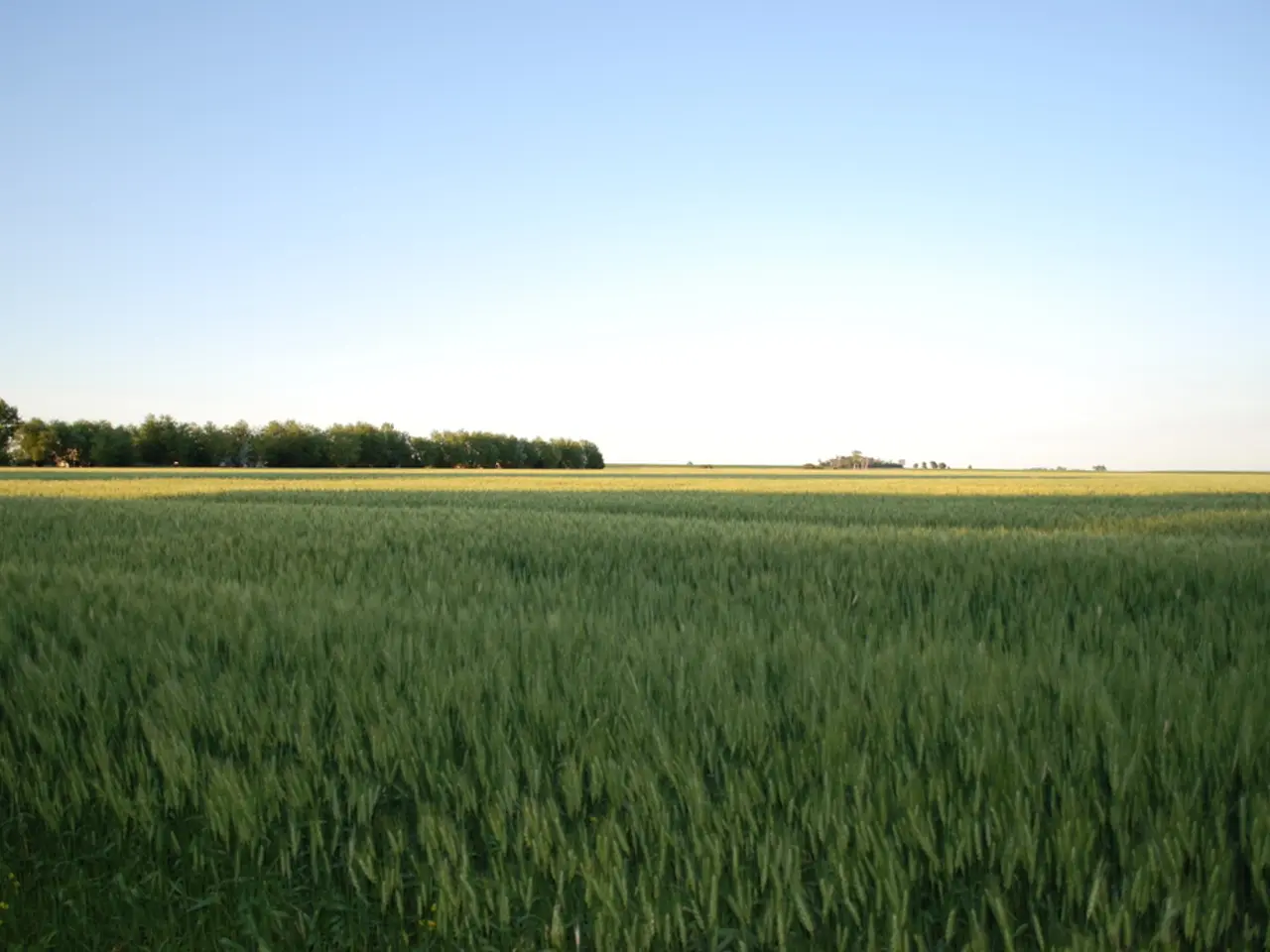Solar-powered energy systems set above rice fields maintain crop production while producing electricity
In the picturesque town of Miyada-mura, Nagano Prefecture, a solar array stands three meters above a rice paddy, marking a significant step towards a sustainable future. This dual-axis sun-tracking photovoltaic (PV) array is part of a national government initiative to accelerate solar investment and address Japan's land scarcity issues.
Agrivoltaics, the practice of stacking land uses, growing food, and generating power on the same plot, offers a compromise between renewable energy build-out and domestic food production in Japan's mountainous terrain. The solar array was installed to demonstrate a way to harvest renewable electricity without giving up valuable farmland.
Researchers argue that pairing solar panels with rice paddies is no zero-sum game. Over two growing seasons, the field under the panels produced 75 percent of neighboring paddies' rice output in the first year and 85 percent in the second year, with grain quality meeting Japan's top grade both years.
The solar array generates nearly 44,000 kWh annually, and its efficiency is 961.4 kWh per installed kilowatt. These findings provide a data-driven case for scaling agrivoltaic projects in Japan, where the government expects solar to shoulder a growing share of the energy mix by 2030.
Agrivoltaics holds significant potential to address land scarcity for renewable energy build-out in Japan and other countries. By allowing simultaneous cultivation of crops beneath elevated solar panels, this approach maximizes land productivity by combining agricultural and energy outputs on a single land parcel.
Climate and ecological benefits also come with agrivoltaics. Solar panels provide partial shading that creates a favorable microclimate for certain crops by reducing heat stress and evapotranspiration, which can increase agricultural yields and improve resilience to climate risks. Additionally, installations can enhance biodiversity, improve soil moisture, and support pollinator-friendly ground cover.
Farmers stand to benefit financially from agrivoltaics. By earning revenue from solar power generation alongside traditional farming, they can gain a second revenue stream, bringing economic resilience to rural areas. The local consumption or sale of clean energy can reduce reliance on costly or unreliable grid electricity in rural areas.
Well-designed agrivoltaic projects can also foster community benefits, enhance rural development, and increase social acceptance of renewable energy. Researchers plan to test artificial-intelligence control systems that adjust panel angles in real time as sunlight, weather, and crop growth change, further optimizing energy generation and agricultural output.
Successful agrivoltaic deployment requires enabling frameworks, including clear regulations, quality standards, and integration into agricultural and spatial planning policies. Japan, along with other countries, is increasingly focusing on such frameworks to promote agrivoltaics as part of a sustainable and resilient energy transition.
In summary, agrivoltaics presents a promising "win-win" solution by mitigating land scarcity issues in Japan and globally, allowing renewable energy expansion while maintaining agricultural productivity and enhancing rural socio-environmental resilience.
- The dual-axis solar array, a part of Japan's national initiative, demonstrates the potential of agrivoltaics, a practice that combines renewable energy production with crop cultivation, particularly in Japan's mountainous terrain.
- Agrivoltaics, by allowing simultaneous agriculture and energy generation on the same plot, can maximize land productivity while mitigating land scarcity for renewable energy build-out.
- Research indicates that agrivoltaics can offer significant financial benefits to farmers, providing a secondary revenue stream from solar power generation in addition to traditional farming, thus promoting economic resilience in rural areas.
- To support the wide-scale adoption of agrivoltaics, there is a need for enabling frameworks, including clear regulations, quality standards, and integration into agricultural and spatial planning policies, which various countries are currently focusing on to facilitate sustainable and resilient energy transitions.




